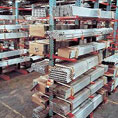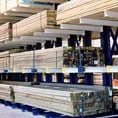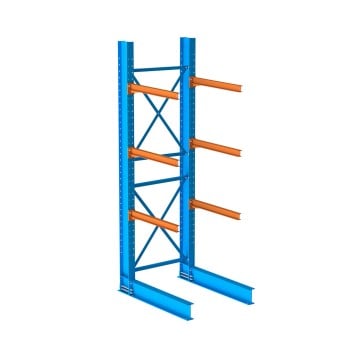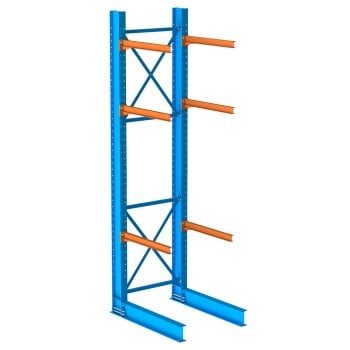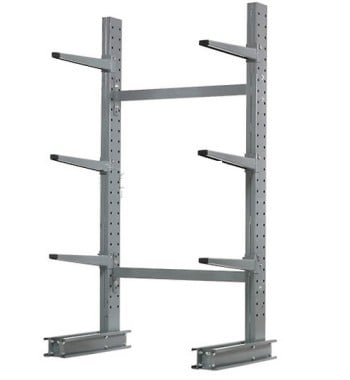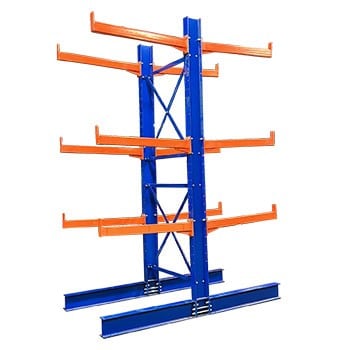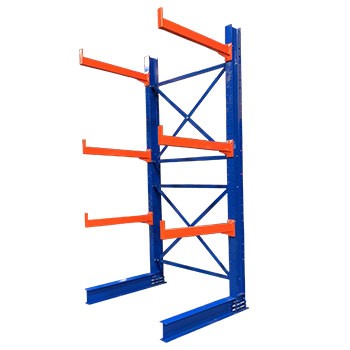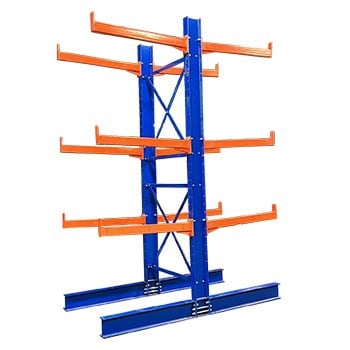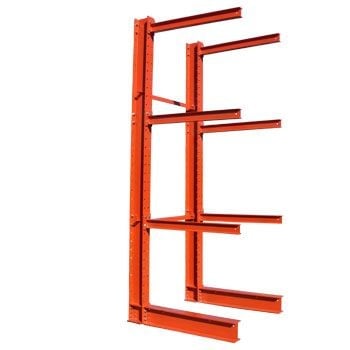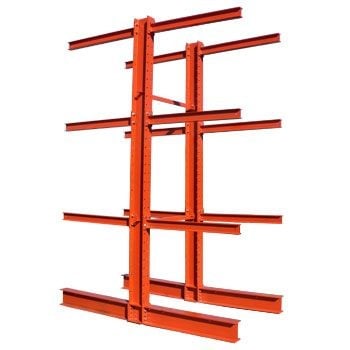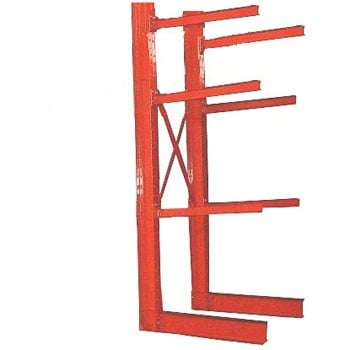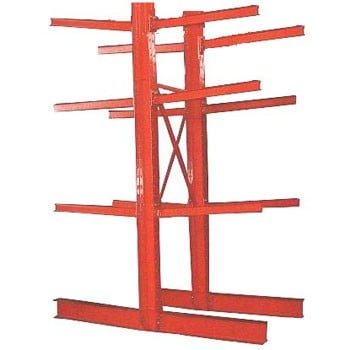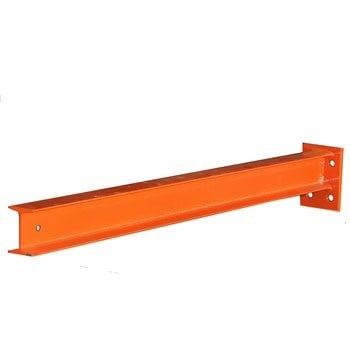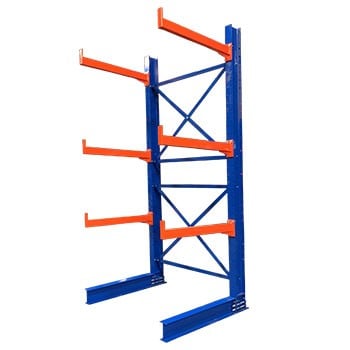About Our Cantilever Racking Systems
Provide flexible storage and easy access to your non-pallet-sized material such as lumber, pipe, tubing, steel bars and furniture with cantilever racks. These heavy duty, freestanding storage units have horizontal load carrying arms that extend outward from a single vertical column. The absence of a front column makes these racks faster and easier to load and unload with forklifts than selective pallet racks. This helps lower your handling time and costs.
Buying used cantilever racking systems and parts is very common and can save you up to 30% compared to buying new racking. Along with the savings, there is virtually no difference between new or used, other than the possibility of physical wear (such as paint) which will occur eventually anyway after consistent use within your warehouse.
Cantilever Racks FAQs
Q. How do I choose the right cantilever racking system?
A. Step 1 – Determine the weight of what you will be storing so you know how much capacity it will need to handle.
Arm capacity formula = Load Weight / Number of Arms Per Level
Upright capacity formula = Number of Arms Per Side x Load Per Arm
Step 2 – Measure your facility and determine the height and length limitations for your uprights and take your forklifts into account in these measurements. Also measure inventory to determine the necessary lengths needed for arms because inventory should never hang over the edge of a cantilever arm.
Step 3 – Properly space the arms to avoid the deflection of inventory. Arms should always be spaced in even increments to ensure the best support.
Step 4 – Measure the vertical separation needed between arms. Make sure to factor in the space needed for a forklift or worker to access the inventory.
Step 5 – Choose the braces. Select from horizontal braces and diagonal braces depending on your capacity requirements. The correct length of a brace is equal to the distance between the centerlines of your two uprights.
Q. Why is the structural cantilever tower double sided when I want single sided cantilever?
A. All structural cantilever towers are punched on both sides of the I-beam. This allows you to bolt the bases to both sides. If the total number of bases matches the total number of towers, it’s single sided. If the base total is double the amount of towers, it’s double sided.
Q. Is the arm capacity shown the amount per arm or per shelf?
A. All arm capacities stated are ratings per arm. You take the arm capacity times the number of arms supporting the product to get the overall capacity per level. This will also help determine how many towers you will need to support the load.
Q. How do you determine the spacing between cantilever towers?
A. Place two wood blocks on the floor evenly spaced. Lower the load onto the blocks. If there is deflection (bowing) of the product between the two blocks add a third block evenly spaced. If deflection is still present, place a 4th block evenly spaced and proceed with more blocks evenly spaced until no deflection is detected.
Q. What surfaces can this type of racking be installed on?
A. These units must be installed completely level and properly anchored on flat concrete surfaces. They are not designed to sit on gravel, asphalt, or dirt/soil. Due to the extreme weights they hold, cantilever racks will tend to seat down into non-concrete surfaces over time. Uneven or seated-down surfaces will risk the integrity of the system.
Q. Will they topple over if I fill product one level at a time?
A. Both single and double-sided units are designed to be fully supported at all times. The system can topple if the design has longer bases than arms by a few inches. Anchoring the system into concrete can help improve safety and prevent this from happening.
Q. Should straight arms have a slight angle?
A. All cantilever arms are designed and manufactured with a slight incline. The load will drop the arms to straight when placed, ensuring that the capacity rating will hold the weight they are intended to when fully loaded.
If you need help choosing your new racking system, contact our expert staff at Warehouse1 and find one that works with your storage needs.
